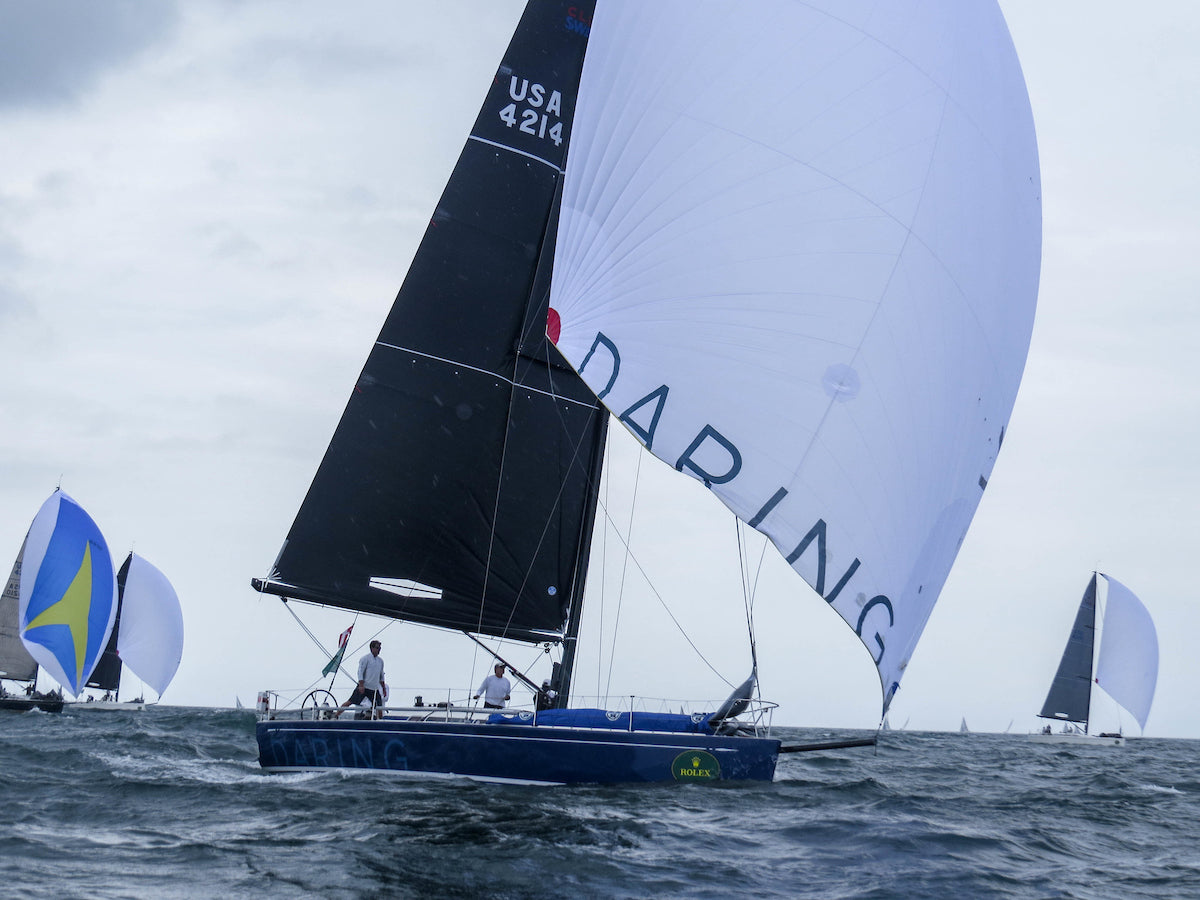NOT STEERING DOWNWIND
It happens almost without words. As the puff hits, Heidi and Jeff move off the cabin top to the rail. Tom trims back on the guy and David eases the spinnaker sheet. Jack eases the main. The boat bears off slightly and accelerates.
As the puff fades, Heidi and Jeff slide inboard, the pole goes forward, and the spinnaker sheet is trimmed. The main comes in. The boat heads up and carries speed.
Ron, at the helm, sits nearly motionless, the wheel moving in his hand as the crew steer the boat with weight and trim. Gradually we pull away from the other 37 footers, lower and faster down the run.
You can use crew weight and sail trim to steer any boat downwind. Steering with weight and sails is not just for dinghy sailors; it is fast in big boats too. The less you use the rudder to steer, the faster you will be. Here’s how it works:
To Bear Off
In moderate winds, we can sail lower in puffs and still keep target speeds. Bearing off will also help us stay in the puff longer. To bear off, move crew weight to windward and rotate the spinnaker to windward. Ease the spinnaker sheet in any puff, because the puff will shift the apparent wind angle aft. Trim back on the guy as the sheet is eased to keep proper spinnaker shape and to rotate the spinnaker to windward. Ease the main to eliminate weather helm.
You will need to move some crew weight to windward just to counter the heeling forces of the puff. It will take an additional increment of crew weight to actually help the boat bear off.
To Head Up
As the puff fades it is best to head up to keep apparent wind speed and to sail the new target angle. As the boat slows down, you will no longer be able to sail as low as you could in the puff. To head up, trim the spinnaker sheet and ease the guy. Trim the main and move crew weight forward and to leeward.
The next time you are steering downwind in moderate air, stop steering. Use your crew weight and trim to steer the boat. You’ll steer faster when you are not steering downwind.



























